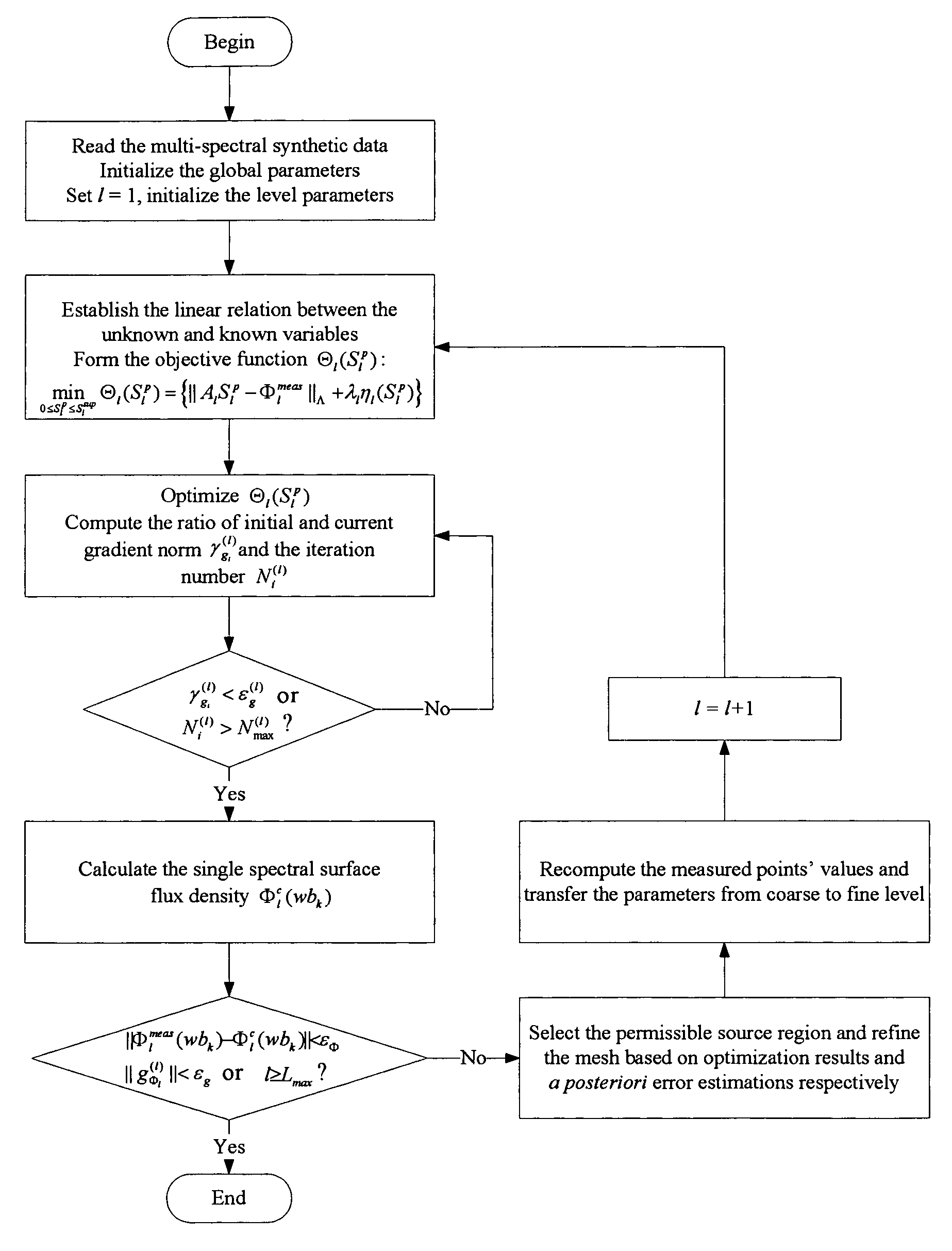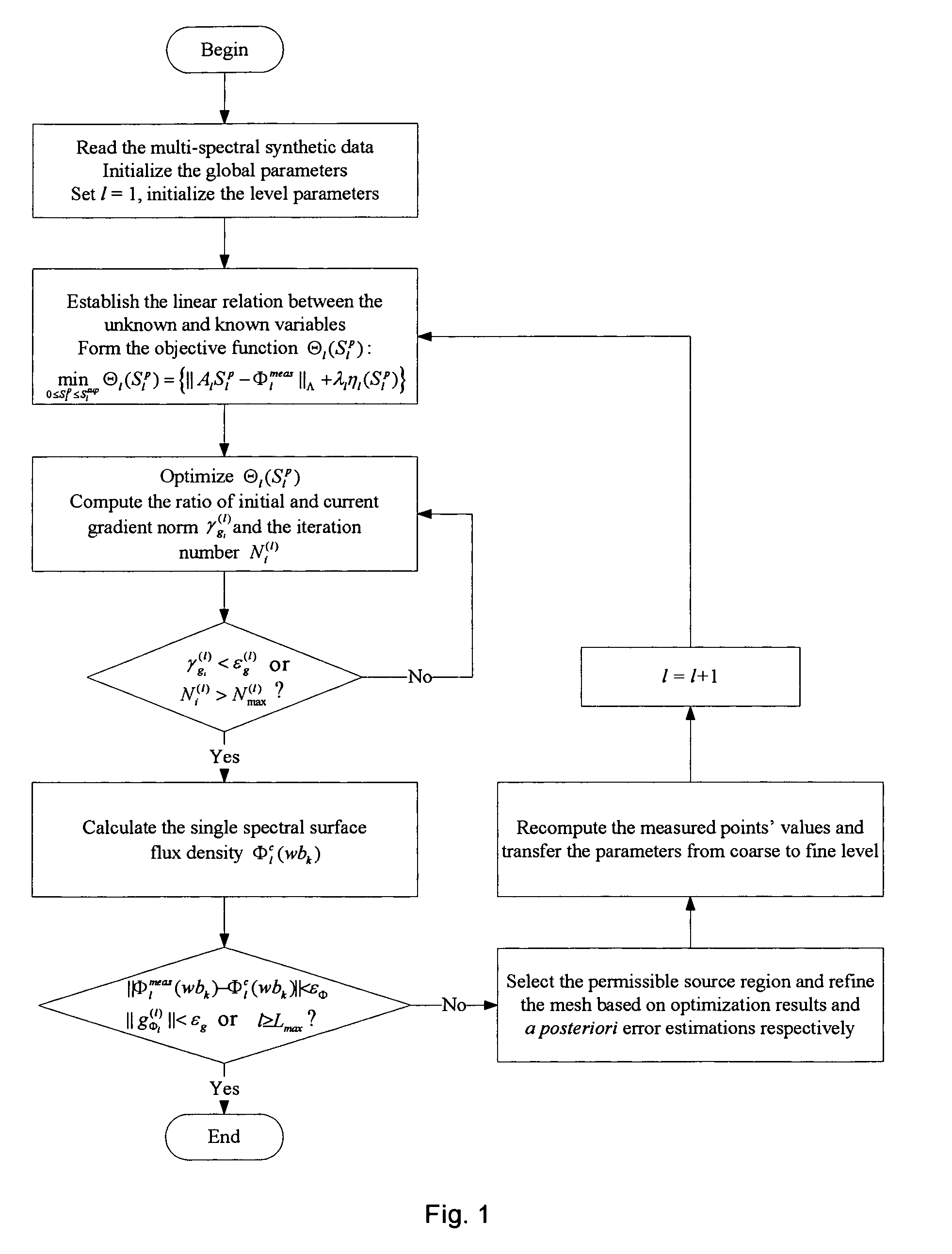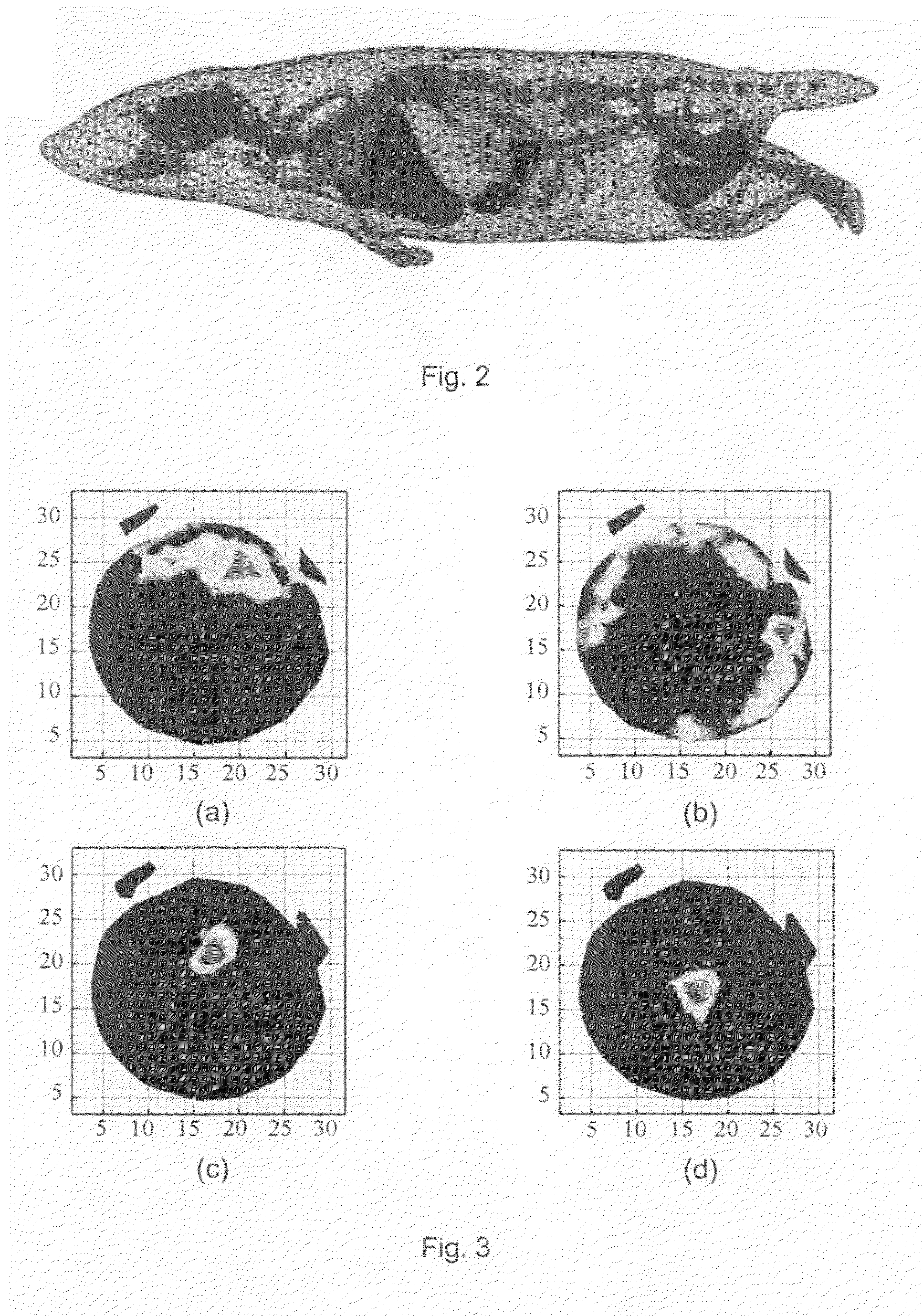Multi-spectral reconstruction method based on adaptive finite element
a multi-spectral reconstruction and finite element technology, applied in the field of optical molecular imaging modalitybioluminescence tomography, can solve the problems of dimensional disaster, decrease the reconstruction speed and quality, etc., and achieve the effects of reducing the ill-posedness of blt, improving reconstruction quality, and accelerating the reconstruction process
- Summary
- Abstract
- Description
- Claims
- Application Information
AI Technical Summary
Benefits of technology
Problems solved by technology
Method used
Image
Examples
Embodiment Construction
[0032]In the following the reconstruction algorithm will be elaborated with reference to the drawings. The implementation described herein is for illustrative purposes only and is not intended to limit the range of the invention.
[0033]The reconstruction method of this invention includes the steps as follows:
[0034](1) The triangle grid in the reconstruction region is segmented on the (l−1)th (l>1) level, and then the finite element method is used to discrete the diffusion equation into a linear equation on a single-spectrum, which will be convenient for the next process;
[0035](2) In view of the linear relationship between unknown sources and known boundary measured data, the relations between them are established by the matrix transformation in the single spectral band. Afterwards, taking into account the spectrum characteristics of the bioluminescent sources and the selection of a posteriori permissible source region, all the relation equations in the single-spectrum are combined, a...
PUM
 Login to View More
Login to View More Abstract
Description
Claims
Application Information
 Login to View More
Login to View More - R&D
- Intellectual Property
- Life Sciences
- Materials
- Tech Scout
- Unparalleled Data Quality
- Higher Quality Content
- 60% Fewer Hallucinations
Browse by: Latest US Patents, China's latest patents, Technical Efficacy Thesaurus, Application Domain, Technology Topic, Popular Technical Reports.
© 2025 PatSnap. All rights reserved.Legal|Privacy policy|Modern Slavery Act Transparency Statement|Sitemap|About US| Contact US: help@patsnap.com



